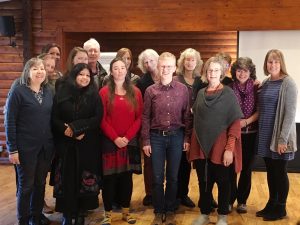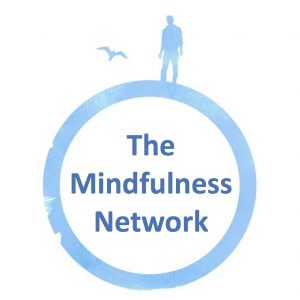
– written by Estrella Fernandez in Spanish and English. Please scroll down to read the English translation.

ESPAÑOL
“Comparte una breve historia sobre algún momento de tu vida en que te hayas sentido excluido o tratado de forma diferente a los demás, y sobre el efecto que esto tuvo en ti a corto y quizás, a medio o largo plazo.”
Con esta sencilla invitación comenzamos el entrenamiento en Igualdad, Diversidad e Inclusión facilitado por Bethan Roberts y organizado por Mindfulness Network el pasado fin de semana en Gilwell Park, Londres.
Las historias fueron breves -no más de un minuto-, pero el aprendizaje y el impacto profundo: Qué fácilmente podemos ser heridos y excluidos. Y qué fácilmente podemos herir y excluir a otras personas.
Nuestra mente filtra, en aras de la supervivencia y de forma automática e inconsciente, nuestra percepción de los otros como iguales o diferentes. Esta comparación continua es una ventaja evolutiva que se vuelve en nuestra contra en la vida cotidiana, causando dolor y sufrimiento y asentando la base de la discriminación y la desigualdad.
Y no son solo los rasgos evidentes – para esos, afortunadamente, tenemos leyes que nos protegen en términos de género, raza, discapacidad física, religión, orientación sexual…, sino toda una multitud de características que nos hacen diferentes y para las que no hay amparo en la legislación.
La pobreza, la lengua que hablas y cómo la hablas, el color de tus ojos, de tu pelo, el tamaño de tus pies…pueden convertirse en fuente de exclusión. Basta una frase o una broma que apunte a la diferencia para sumir a alguien en una profunda soledad.
La igualdad, la diversidad y la inclusión dependen de nuestros pequeños gestos cotidianos, de cómo hablamos, de cómo miramos, de cómo sonreímos, pero no solo a los demás, sino a nosotros mismos: el cómo nos pensamos, nos vemos y tratamos tiene una poderosa influencia en cómo nos sentimos, y en la percepción del otro.
Establecer relaciones inclusivas e integradoras requiere un empeño deliberado. Requiere consciencia, intención y esfuerzo: consciencia para notar nuestras reacciones automáticas, intención para inclinar la mente hacia la amabilidad y esfuerzo para re-condicionarnos con nuevos hábitos de respuesta que sustenten la intención, que hagan de la amabilidad constancia.
¿No es esta la esencia del entrenamiento en Mindfulness?
El propósito último de las intervenciones basadas en Mindfulness es entrenar a las personas a adoptar y mantener una relación inclusiva e integradora con sus vidas, una relación sustentada en la consciencia, la intención amable y la aceptación.
Por otro lado, la experiencia del participante depende en gran medida de que, como profesores, encarnemos esa misma relación, depende del vínculo de aceptación y amabilidad consciente que establecemos con nosotros mismos y con ellos.
Igualdad, Diversidad e Inclusión están, en definitiva, en el centro de nuestro trabajo en Mindfulness. Comprender y profundizar en el alcance de su significado resulta prioritario en el desarrollo de competencias como profesores.
Gracias a Bethan, a Alison y a todo el equipo de Mindfulness Network por todo el aprendizaje.
ENGLISH
“Share a short story about some time in your life when you felt excluded or treated differently from others, and about the effect that this had on you in the short and perhaps in the medium or long term.”
With this simple invitation, we started the Equality, Diversity and Inclusion training facilitated by Bethan Roberts and organized by Mindfulness Network last weekend in Gilwell Park, London. This day of training was part of the Mindfulness Network’s Annual Gathering and I sat with around 16 others in the room.
Our stories were brief – no more than a minute – but the learning and the impact was profound, revealing so much about how easily we can be hurt and excluded. And how easily we can hurt and exclude others.
One of the insights we learned was that it is not just about the obvious exclusions – for those, fortunately, we have laws that protect us in terms of gender, race, physical disability, religion, sexual orientation, etc – but a whole range of characteristics that make us different and for which there is no shelter in legislation.
Socio-economic status, the language you speak and how you speak it, the colour of your eyes, your hair, the size of your feet … can become sources of exclusion. It takes just a phrase or a small joke pointing to the difference to plunge someone into deep solitude.
Equality, diversity and inclusion are impacted by our small daily gestures, on how we speak, on how we look, on how we smile. And not only towards others, but to ourselves: how we think about, see and treat ourselves, has a powerful influence on the way we feel, and on our perceptions of others.
Developing relationships based on equality and inclusiveness requires a deliberate effort. It requires awareness, intention and effort: awareness to notice our automatic reactions, intention to tilt the mind towards kindness and effort to re-condition ourselves with new response habits that sustain the intention to make kindness a constant attitude.
Isn’t this the essence of mindfulness training?
The ultimate purpose of mindfulness-based interventions is training people to adopt and maintain an inclusive relationship with ourselves and everything/everyone in our lives, a relationship based on awareness, kind intention and acceptance. As a mindfulness teacher, our embodiment of this relational attitude – including developing a bond that is full of acceptance and conscious kindness with ourselves and them – can have a tremendous impact on the experience of our group participants.
Equality, Diversity and Inclusion are at the heart of our work in mindfulness. Understanding and deepening the scope of their meaning should be a priority in the development of our skills as teachers.
Thanks to Bethan, Alison and the entire Mindfulness Network team for making all this learning and reflection possible.




